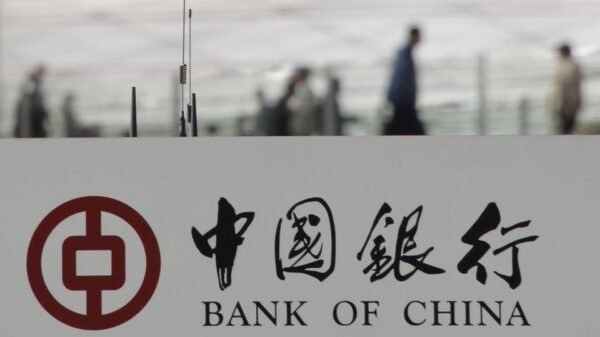GREEN NFTs
Non-fungible tokens (NFTs) have taken the art world by storm, but at what cost to the environment? See how Green NFTs are revolutionizing how we responsibly acquire and sell digital art.
KEY TAKEAWAYS
- Compared to traditional NFTs, green NFTs are more environmentally friendly and sustainable.
- They are intended to lessen the carbon footprint and energy use of producing and trading NFTs.
- For their production and trading, green NFTs utilize renewable energy sources.
- Green NFTs can transform how we produce and sell art.
- The perception of cryptocurrencies is improving thanks to green NFTs.
- To implement sustainable solutions in the IT sector, green NFTs are a crucial first step.
- Green NFTs have a bright future thanks to the potential expansion of the art and cryptocurrency sectors.
INTRODUCTION
The world is captivated by non-fungible tokens (NFTs), digital assets. They cannot be exchanged for another item of equal value. NFTs have been used to sell digital art, music, and tweets for millions of dollars. However, the growing popularity of NFTs has generated worries about their environmental impact.
Thankfully, Green NFTs provide a solution to all of these environmental issues. These environmentally friendly options are designed to reduce the carbon footprint and energy consumption of creating and trading NFTs. In this post, we’ll look at what Green NFTs are, how they operate, and how they impact the environment.
Understanding NFTs and why they have become popular is crucial before we get into Green NFTs. NFTs are unique digital assets that cannot be exchanged for another item of equal value. This makes them perfect for peddling easily-replicable digital goods like music, painting, and other forms of creative expression. The ownership of an NFT is maintained on a blockchain, a decentralized digital ledger that verifies the asset’s legitimacy and uniqueness.
For several reasons, NFTs have grown in popularity. One benefit is that they provide artists with a new way to make money from their digital works. Instead of relying on traditional means of selling art, such as galleries and auction houses, artists may sell their work directly to collectors using NFT markets. Moreover, NFTs allow collectors to acquire rare and unique digital goods that may grow in value over time.
Despite their popularity, NFTs have drawn criticism for their impact on the environment. Creating and trading NFTs uses much energy and increases greenhouse gas emissions. The way NFTs are created and exchanged accounts for their energy consumption. NFTs are often created using “mining,” which employs powerful computers to solve complicated mathematical problems. This procedure uses a lot of energy, most of which originates from fossil fuels like coal and natural gas, which could be more sustainable.
Compared to traditional NFTs, green NFTs are more environmentally friendly and sustainable. They have been designed to reduce the carbon footprint and energy consumption of creating and trading NFTs. The way they are created and exchanged is the main distinction between Green NFTs and traditional NFTs.
Green NFTs utilize renewable energy sources such as the sun, wind, and water instead of relying on fossil fuels. Green NFTs are also created utilizing less computing power and more energy-efficient approaches. Alternatives to the more energy-intensive proof-of-work mechanism employed by traditional NFTs include proof-of-stake and proof-of-authority.
Compared to traditional NFTs, green NFTs are far more ecologically friendly and sustainable. They reduce the carbon footprint and energy consumption connected with NFTs by employing renewable energy sources and trading techniques. Green NFTs enhance the credibility of digital currencies by demonstrating their potential for sustainable application.
Green NFTs have a bright future. Green NFTs are well-positioned to become a popular substitute for traditional NFTs as the IT sector’s desire for sustainable solutions continues to rise. The realm of art has already begun.
WHAT ARE GREEN NFTs
Green NFTs are a more environmentally friendly substitute for traditional non-fungible tokens, which are gaining popularity in the digital art and collectibles market. In this post, we’ll define Green NFTs, discuss how they vary from traditional NFTs, and discuss their environmental benefits.
Green NFTs are NFTs that are created and traded utilizing blockchain technology that relies on renewable energy sources. Unlike traditional NFTs, which rely on energy-intensive proof-of-work (PoW) or proof-of-stake (PoS) algorithms, Green NFTs utilize proof-of-stake (PoS) algorithms that require far less energy.
Green NFTs have a substantially reduced carbon footprint than traditional NFTs, which is one of its key benefits. Traditional NFTs rely on energy-intensive PoW or PoS algorithms, which use enormous amounts of processing power to validate transactions on the blockchain. The energy needed for this procedure comes from conventional, non-renewable sources like coal and natural gas.
In contrast, Green NFTs power the blockchain network by using renewable energy sources like solar, wind, or hydro. Green NFTs are more environmentally friendly and sustainable in the long term.
The promotion of sustainability and environmental consciousness is another advantage of green NFTs. Green NFTs contribute to lowering the industry’s total carbon footprint by employing renewable energy sources to power the blockchain network. This motivates creators, collectors, and buyers to pursue more environmentally friendly activities and improve the environment.
Green NFTs offer various advantages over traditional NFTs in addition to their environmental benefits. First, they have advantages over conventional methods, such as being more secure, open, and productive. This is because they rely on PoS algorithms, which are more secure and energy efficient than PoW or PoS algorithms.
In conclusion, Green NFTs are a sustainable alternative to traditional non-fungible tokens that offer a range of benefits for the environment and the digital art and collectibles sector. They are created and traded using blockchain technology that relies on renewable energy sources, which means they have a substantially smaller carbon impact than traditional NFTs. In addition to enjoying the benefits of a more secure, transparent, and efficient system, artists, collectors, and buyers may contribute to environmental awareness and sustainability by using Green NFTs.
HOW GREEN NFTs WORK
Green NFTs are a sustainable substitute for traditional NFTs, which are raising environmental concerns. While NFTs are well-liked and have been making waves in the art and digital asset industries, there is rising worry about the harm they may be doing to the environment. This has resulted in the creation of Green NFTs, which employ renewable energy sources and have a lower carbon footprint. In this post, we’ll explore the mechanics of Green NFTs and the advantages they provide for the environment.
Green NFTs, also known as eco-friendly NFTs or carbon-neutral NFTs, are a sustainable alternative to traditional NFTs. They are created and traded using renewable energy sources, which reduces their carbon footprint. Green NFTs are eco-friendly since they don’t contribute to the increase in greenhouse gas emissions driving climate change.
The utilization of renewable energy sources distinguishes green NFTs from traditional NFTs. This means they are created and traded using energy from sources like wind, solar, or hydropower. Green NFTs are environmentally beneficial since their energy comes from sustainable sources.
Green NFTs function in the same way as traditional NFTs. They are one-of-a-kind digital assets kept in a distributed ledger. They are created and traded using renewable energy sources.
For the creation and trading of Green NFTs, renewable energy sources are essential. Traditional NFTs are created and traded using non-renewable sources like coal and natural gas, which have a large carbon footprint. Green NFTs utilize renewable energy sources with a reduced carbon footprint.
By using carbon offsets, Green NFTs’ carbon footprint is also decreased. However, creating and trading Green NFTs results in carbon emissions, which may be mitigated by purchasing carbon offsets. This means that for every unit of carbon released during the creation and trading of Green NFTs, an equal amount of carbon is removed from the atmosphere via carbon offsetting operations.
Green NFTs are a sustainable substitute for traditional NFTs, which are raising environmental concerns. They are created and traded using renewable energy sources, which reduces their carbon footprint. Green NFTs are eco-friendly since they don’t contribute to the increase in greenhouse gas emissions driving climate change. Green NFTs are a more sustainable and environmentally beneficial solution since they use renewable energy sources and carbon offsets.
Adopting Green NFTs represents a significant development toward a more environmentally friendly digital asset market. Concerns concerning the environmental effect of traditional NFTs are being addressed with green NFTs. Green NFTs are a more sustainable and environmentally friendly choice that may lower the carbon footprint of the digital asset business by employing renewable energy sources and carbon offsets.
GREEN NFTs IN THE ART INDUSTRY
Concern regarding the environmental impact of NFTs rises as their use becomes more widespread. But what if there were a sustainable alternative? Then there’s Green NFTs, a relatively new idea making waves in art and beyond.
In this art piece, we’ll talk about what Green NFTs are, how they operate, and how they’re good for the environment. We will also examine their impact on the art industry and how they transform how we create and sell art.
NFTs have been widely adopted in the art industry, with several well-known artists and art sites already using the technology. In addition, several artists have looked at Green NFTs as a solution to the concern about the impact of NFTs on the environment.
Green NFTs offer a sustainable alternative to conventional NFTs, reducing their environmental impact. They allow artists to sell their work online without leaving a sizable carbon footprint. The carbon footprint of Green NFTs is further reduced by using renewable energy sources in their production and trading.
Trevor Jones, a digital artist noted for his distinctive aesthetic, and SuperRare, a marketplace for rare digital art, are just two examples of artists and art platforms that have accepted Green NFTs. In addition, to reduce the environmental impact of its platform, SuperRare has teamed with ClimateTrade to offset the carbon footprint of its NFT transactions.
Green NFTs are transforming the way we sell and create art. They offer a rare chance for artists to expand their audience while minimizing their environmental impact. Green NFTs also offer a way to confirm the legitimacy and ownership of digital art, which has been difficult in the past.
Green NFTs are a novel and fascinating idea that is gaining popularity in the art world and beyond. They offer a sustainable alternative to conventional NFTs, reducing their environmental impact while enabling artists to sell their work online. Green NFTs offer a way to create and sell digital art while minimizing the carbon footprint using renewable energy sources and blockchain technology.
We may anticipate a change toward a more sustainable art industry as more creators and platforms accept Green NFTs. Green NFTs are a positive step toward a more environmentally conscious and responsible future.
THE FUTURE OF GREEN NFTs
Several industries are implementing sustainable solutions to reduce their carbon footprint as the world becomes more aware of the impact of climate change. One industry where the proliferation of NFTs has raised environmental concerns is the crypto and art industries. A new solution has emerged in Green NFTs, which employ renewable energy sources and have a substantially smaller carbon footprint. The potential of Green NFTs in the art and crypto industries and the significance of implementing sustainable solutions in the tech industry will be covered in this essay.
Green NFTs are a relatively recent idea that has emerged as a solution to the environmental impact produced by conventional NFTs. Green NFTs are New Financial Instruments that are created and traded utilizing sustainable energy sources, such as solar, wind, or hydroelectric power. As a result, green NFTs have a far smaller carbon footprint than standard NFTs, created and traded using fossil fuels.
In the art and crypto industries, Green NFTs have enormous potential. People are seeking for sustainable solutions in all areas of their life, including their investments, as the world becomes more aware of the impact of climate change. Green NFTs allow artists, collectors, and investors to participate in the NFT market without contributing to the negative environmental impact. The demand for Green NFTs is expected to rise as more artists and art platforms accept them, resulting in their potential expansion in the art and cryptocurrency industries.
The future of our world depends on the tech industry adopting sustainable solutions. The demand for energy sources to support the world’s growing reliance on tech is rising. Therefore, the tech industry must implement sustainable solutions to reduce its carbon footprint. The tech industry can achieve this goal with the help of green NFTs. The tech industry may drastically reduce its future carbon footprint by employing renewable energy sources to produce and exchange NFTs, which is a step in the right direction toward a more sustainable industry.
In conclusion, Green NFTs offer a possible solution to the detrimental environmental impact of conventional NFTs. They provide a sustainable alternative that decreases the carbon footprint of NFTs and enables the art and crypto industries to participate in the NFT market without contributing to global warming. The potential for Green NFTs in the future is enormous, and their expansion in the art and cryptocurrency industries is expected to accelerate as more artists and platforms accept them. To reduce its carbon footprint and contribute to a more sustainable future, the tech industry must embrace sustainable solutions like Green NFTs.
CONCLUSION
Green NFTs have evolved as a sustainable substitute for conventional NFTs, addressing the environmental issues raised by the art and crypto industries. In addition, the carbon footprint of Green NFTs has been reduced thanks to the adoption of renewable energy sources and offsetting carbon strategies, making them a practical choice for individuals concerned about the environment.
The notion of Green NFTs and their possible impact on the art and crypto industries have been discussed in this article. We spoke about Green NFTs and how they differ from conventional NFTs. We also examined the environmental advantages of Green NFTs, such as the decrease in carbon emissions.
We also examined the inner workings of Green NFTs, including the technologies used in their development and trading. The function of carbon offsetting and renewable energy sources in lowering the carbon footprint of Green NFTs was thoroughly addressed.
We also examined the impact of Green NFTs on the art sector. The adoption of Green NFTs by artists and art platforms was discussed, as well as how Green NFTs are changing how we produce and sell art. It was also anticipated that Green NFTs would rise in the art and crypto industries, demonstrating the significance of embracing sustainable solutions in the technology sector.
In conclusion, Green NFTs are crucial for a more sustainable future for the art and crypto industries. We must emphasize sustainability and consider the impact of our activities on the environment as we continue to investigate and develop new technologies. By embracing Green NFTs and other sustainable solutions, we can strive toward a brighter future for ourselves and future generations.
































































Comment Template